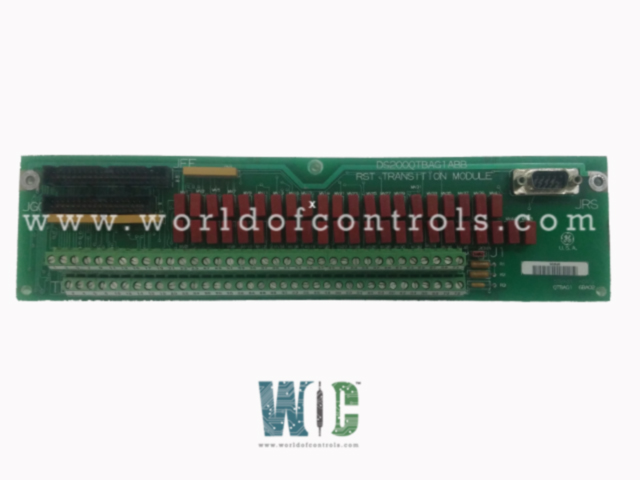
World Of Controls understands the criticality of your requirement and works towards reducing the lead time as much as possible.
DS200QTBAG1ACE - Termination Module is available in stock which ships the same day.
DS200QTBAG1ACE - Termination Module comes in UNUSED as well as REBUILT condition.
To avail our best deals for DS200QTBAG1ACE - Termination Module, contact us and we will get back to you within 24 hours.
Part No.: DS200QTBAG1ACE
Manufacturer: General Electric
Country of Manufacture: United States of America (USA)
Product Type: Termination Module
Availability: In Stock
Series: Mark V
DS200QTBAG1ACE is a termination module developed by GE. It is a part of the Mark V control system. The Termination Module (QTBA) is situated at location six within the cores labeled as R1, R2, and R3. Its primary function is to act as an interface for signals used by the TCQC board specific to each core. This module plays a crucial role in managing COREBUS connections, ensuring continuous communication across the system.
The WOC team is always available to help you with your Mark V requirements. For more information, please contact WOC.
What is DS200QTBAG1ACE?
It is a termination module developed by GE under the Mark V series.
What are JAI and JAJ connections on the board?
JAI and JAJ are COREBUS connections on the board. It is recommended to install termination resistors if these connections are not actively used. This ensures signal integrity and prevents reflection issues within the system, maintaining stable communication across the COREBUS network.
What is the function of the JEE connection on the board?
JEE communicates I/O signals with the respective STCA board for use by the COREBUS. This connection facilitates data exchange and system integration, enabling efficient communication between components crucial for core operations.
What does the JFF connection do on the board?
JFF is responsible for writing LVDT/R excitation signals and servo output signals to the TCQC board in the respective core. This connection plays a crucial role in controlling system parameters and monitoring outputs, ensuring precise operation and responsiveness within the system.